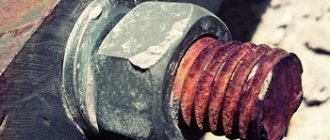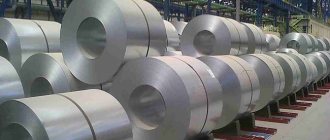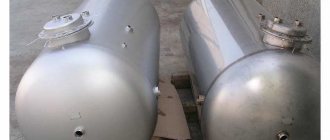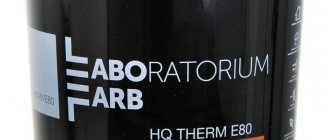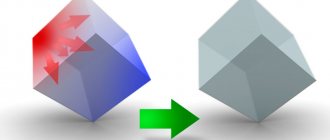The wide use of epoxy resins in everyday life, industry, aircraft and shipbuilding, electrical engineering and electronics, and construction has prompted a detailed study of such parameters of epoxy resins as their thermal conductivity and electrical conductivity coefficients.
There is a program for calculating the uncertainty of verifications in accordance with GOST 8.461-2009, certified by the Federal State Unitary Enterprise named after. Mendeleev, on the basis of which the parameters of materials used in a particular industry are selected.
Differences in conductive compositions
The main difference between conductive adhesives and conventional ones is the presence of specialized components, thanks to which the material acquires the desired electrical conductivity.
In addition, other differences should be noted:
- relatively low strength;
- the presence of graphite and a metal base (sometimes a combination of these components is found);
- specificity of the scope of application (such adhesives are not suitable for other applications);
- high cost.
Properties and technical specifications
This brand of glue is characterized by the following properties:
- high mechanical strength,
- small shrinkage,
- excellent adhesion to most materials,
- electrical insulating abilities (considered a dielectric),
- resistance to water (the adhesive seam is waterproof).
After complete curing, the product can be subjected to further processing - grinding, polishing, sawing, drilling, and it can also be painted. If necessary, pigments are added to the epoxy before mixing with the hardener, and only then the adhesive composition is prepared. At a temperature of 18-25 degrees, the lifetime of the resin after introducing the hardener is 4 hours. The shear strength of surfaces (using metal as an example) is 8 MPa.
Famous brands
There are not many brands of conductive adhesive manufacturers on the market. Among them there are both Russian and foreign companies. Below we list the most proven brands of adhesives:
- Conductive adhesive grade Kontaktol on silver 2g is intended for creating highly elastic, durable surfaces. Produced on a silver base. It dries quickly, making it easy to use. You can purchase Kontaktol at any radio store or market. However, it should be noted that most reviews about this brand are negative.
- "Elekont" is a conductive composition based on epoxy resin, often used by car enthusiasts. Reviews about this product are also not always positive.
- Foreign-made “Done Deal” glue. “Done Deal” is highly durable and reliable. This brand has good reviews from professionals.
- Homakoll is a popular brand of conductive substance that has been on the market for a long time. Most often used as a conductive adhesive for linoleum by large manufacturers. Has antistatic properties.
- "Mastix" is an electrically conductive lubricant for repair work on the rear window of a car. Mastix is considered the best choice in its segment.
- TPK-E is a brand of glue from a Russian manufacturer. A special feature of the composition is the ability to maintain performance characteristics over a wide temperature range - from minus 190 to plus 200 degrees Celsius. Most often this brand is used in industrial settings.
Temperature conditions when the epoxy hardens
The rate of crystallization, and therefore the hardening of epoxy resin, is affected by temperature. If you heat the composition by literally 10ºC, this process will speed up 3 times!
By the way, in the vast majority of cases, cold-type hardeners are used in everyday life, which do not need to be heated. However, in some cases there is a need to use hot hardeners. They make it possible to obtain the most durable products that can withstand high temperatures and heavy loads. Simply solidifying in a heated state leads to the formation of a denser network of molecules, resulting in a stronger product.
Self-production
Conductive grease can not only be purchased ready-made, but also made with your own hands. However, before giving manufacturing instructions, it is necessary to answer a number of the most common questions among beginners:
- Is Moment glue capable of conducting electricity? No, none of the many variations of this adhesive are capable of conducting current.
- Is Superglue electrically conductive? To answer the question you need to understand the nature of conductivity. This type of substance does not contain components (metals, graphite) that conduct electricity. Thus, in terms of its capabilities, “Superglue” is almost identical to plastic.
- What about epoxy compounds? Epoxy resin does not transmit electricity for the reason stated above.
- Are high-voltage repairs using specialized glue allowed? No, such work is prohibited in accordance with safety regulations.
- I bought Kontaktol, but it does not give the desired effect. The reason is most likely that the product is counterfeit. The popularity of this brand has led to a large number of counterfeits.
- What is needed for the electrical conductivity of the composition? The adhesive must necessarily contain conductive components. Moreover, their specific gravity must be sufficient to ensure electrical conductivity.
Manufacturing instructions
This part of the article will talk about how to make conductive glue with your own hands. The desire to make the composition yourself is often dictated by the unsatisfactory quality of store purchases. In addition, sometimes an adhesive composition is needed urgently, and there is simply no time to find it on sale. In this case, you can make glue with your own hands according to the instructions below. To make it you will need:
- First of all, you need to prepare a base on which homemade conductive glue will be made. We will use a graphite pencil lead as such a base. This rod will become a conductive element.
- Stationery knife.
- Hammer.
- A piece of paper on which we will collect graphite dust.
- A glass or other container for graphite dust.
- Nail polish.
Before making conductive glue, you need to remove the graphite from the pencil. To do this we use a stationery knife. Next, place the rod on the paper, cover it on all sides so that dust does not scatter to the sides. Using a hammer, grind the graphite until it turns into dust.
We collect dust in a clean and dry container prepared in advance. Pour nail polish into a glass and stir the mixture with a wooden stick (you can use, for example, an unnecessary pencil). That's it - the conductive composition is ready.
other methods
Conductive gel or varnish can also be made from metal chips or dust. The fact is that graphite is carbon with a special crystal lattice. Carbon is found in combustion products, for example, in soot.
Silver can also be used as conductive elements, although the method is quite labor-intensive. First you need to purchase silver nitrate or regular nitric acid. You will also need 1% formalin solution and ammonia.
After combining silver with formaldehyde in equal parts and a few drops of ammonia, a characteristic black precipitate will appear - this is silver. The metal is extracted by filtration in distilled water. We dry the metal at high temperature - from 100 to 150 degrees above zero. The resulting powder will become the basis of the adhesive. To make the composition more liquid (then it will dry more slowly), the glue can be diluted with a small amount of alcohol.
There is another way to make conductive glue with your own hands. Silver powder can be obtained by evaporation: the process is carried out until crystals appear. Next, heat the substance at 400 degrees for 30 minutes. As a result, bubbles will appear, which will indicate the readiness of the substance. The method is considered very effective, but not readily available at home. In addition, certain skills in working with chemicals are required.
Features of self-production
There are a number of important points when obtaining adhesive compositions yourself:
- Wrong decisions are quite possible. The consequence of such errors can be damage to expensive equipment. Therefore, if you lack confidence in your own knowledge and skills, it is better to trust professional compositions from manufacturing companies.
- Conductive varnish made from nail polish, by definition, cannot be as durable as the factory compound.
- With a correctly set up workflow, the production of the composition will take no more than 3-5 minutes.
Thus, everyone decides for themselves whether to make glue themselves or simply buy it in a store, based on existing knowledge, financial resources, availability of goods at a particular moment and other considerations.
Stages of hardening of “epoxy”
— For the first 30 minutes, the mixture remains liquid and can easily penetrate into the smallest pores. If you are pouring a particular mold and want all the potholes and depressions to appear on its surface, fill the mold during this period while it has good fluidity.
— Over time, the resin thickens and becomes less fluid. During this period, it is easier to control, and therefore resin of this consistency is used to fill floors, countertops, or any other flat surfaces.
Important! When a layer of epoxy resin hardens, it attracts dust, and this can ruin the entire author's idea. Therefore, work with epoxy must be done in a clean room, having first removed all dust. If the product is small, think of a box in advance with which you can cover the product until it completely hardens.
— Having become even thicker, the composition is no longer suitable for creating relief forms. But at this stage, the adhesive properties of the material are more pronounced. This means that resin becomes an ideal material for gluing objects together.
— At a certain point, the thickened resin acquires properties similar to rubber. It stops sticking to your hands, but remains flexible enough for you to give it the desired shape. If you place this material in a certain mold and clamp it well for several hours, the epoxy resin will harden in the position you want.
— Once fully hardened, the resin turns into a durable plastic that is not easily scratched.
It must be said that it is impossible to indicate the exact time of each of the solidification stages. Each composition will have its own, and therefore it should be installed independently, in a practical way.
Important! If there is no special mold suitable for pouring epoxy resin, you can use a mold made of any material, after first lubricating its surface with vegetable oil. But be careful! Each epoxy composition reacts to oil differently.
The difference between conductive glue and regular glue
The main difference is that the composition of conductive adhesive requires the presence of certain components that provide the required level of electrical conductivity.
Among the differences we can also highlight:
- lower strength indicators than conventional ones;
- the composition usually contains graphite, metal or both components in a complex;
- the scope of application has its own specifics;
- the cost of such compositions is slightly higher.
Conductive Adhesive Brands
There are several manufacturers of conductive adhesive, both foreign and domestic, that guarantee high electrical conductivity.
- Contact. Probably the most famous composition among radio amateurs. Conductive adhesive contactol has high elasticity, sufficient strength, is made on a silver basis and dries quickly, which ensures quick and convenient installation. You can buy conductive glue of this brand in any amateur radio store, however, the professionals in this field themselves speak rather poorly about it. But there are also positive reviews.
Contactol - Elekont. Conductive adhesive that will be useful to every car owner. This is an epoxy compound. Reviews about it are also not encouraging.
Elekont - Done deal. This is a foreign representative of this type of glue. Conductive adhesive done deal has increased reliability and strength, which makes it better than domestic analogues.
Done Deal - Homakoll. A fairly popular brand of conductive adhesive that has long established itself in the market. It is used by large companies as an electrically conductive adhesive for floor coverings with an antistatic effect.
Homakoll - Mastix. This company introduces an electrically conductive adhesive for repairing heated rear windows. Mastix conductive adhesive is considered one of the best in this segment.
Mastix - TPK-E. The brand is distinguished by its technical characteristics. This adhesive will function in a wide range of temperatures. From -190 to +200 °C. Used in enterprises.
Epoxy resin consumption
Obviously, the consumption of this material is greatly influenced by the quality of the surface being poured, in particular, its roughness, porosity and tendency to absorb other substances.
Usually the issue of epoxy consumption is of concern to those who decide to pour a self-leveling floor. And here, again, the requirements for gender are of great importance. If you want your concrete floor to stop dusting, 100 g per 1 sq.m. is enough. surfaces. When it is necessary to obtain a perfectly smooth, durable and even reinforced coating, the consumption can increase to 3-3.5 kg of resin per square meter of floor.
Made by yourself
Many novice radio amateurs are wondering how to make conductive glue with their own hands. Here it is necessary to clarify some questions that beginners ask most often.
- Does glue conduct current? This is an adhesive that was developed and introduced by the German company Henkel. A total of 6 compounds were created for various purposes, but none of them conduct current.
- Does super glue conduct electricity? To answer this question, it is necessary to turn to the very concept of an electrically conductive material. Super glue does not contain components that would allow it to be called electrically conductive (graphite, metals), so its performance in this regard is practically no different from plastic.
- Does epoxy conduct electricity? Epoxy resin does not conduct electricity due to the above reason.
- Is it possible to repair high voltage wires using this glue? Masters do not recommend doing this, as it goes against safety rules when working with electricity.
- Why doesn't the contactor work? In modern times, a lot of fakes of this glue have appeared, so it is better to purchase this glue with guarantees from the manufacturer.
- What glue conducts electricity? Any adhesive that contains electrically conductive components in sufficient quantities.
Manufacturing instructions
Recently, radio amateurs have spoken unflatteringly about modern manufacturers of conductive glue. Perhaps it’s all about fakes or the manufacturers themselves provide low-quality goods. In addition, conductive adhesive for microcircuits and other equipment is sometimes needed urgently, and there is no time to purchase or order it. In this case, you can make such a composition yourself using our instructions.
How to make conductive glue? First you need to stock up on the necessary set of materials. He is quite modest:
- a graphite rod from a construction or simple pencil, which will act as the main conductive element in the resulting composition;
- stationery knife;
- a sheet of paper to collect graphite dust;
- hammer;
- container for collecting graphite dust;
- nail polish.
First you need to get a graphite rod. Using a utility knife, grind down the wooden part of the pencil until the graphite lead can be removed. After this, place the rod on a sheet of paper, close it so that the dust does not fly away and use a hammer to grind the lead to dust. This dust will become a conductive element. Collect the dust in a container (an ordinary cap from a plastic bottle is perfect for this). Pour nail polish into the container and mix thoroughly with graphite dust using wooden sticks that may have remained after processing the pencil. Now the conductive glue is ready! The convenience of this glue is that you have the right to make mistakes. Nail polish is easily removed using a special composition.
It should be noted that graphite is not the only material on the basis of which conductive adhesive can be made.
People also know compositions that are based on metal chips or dust. You can use your imagination and remember the school course in chemistry and physics, where they talked about conductive materials. Let's give an example. Graphite is essentially carbon with a characteristic crystal lattice. Carbon is also contained in the products of wood combustion - in soot. For this reason, conductive carbon black adhesive is also quite popular among radio amateurs.
How to use epoxy resin
To prepare “epoxy” you will need to combine the resin with a hardener. They are usually sold together, and on both bottles you can find the proportions in which the materials are mixed.
Depending on what kind of resin you want to get, the proportions can be: 10:1, 10:4 or 10:6 (the first is the resin, the second is the hardener). If the proportions are not indicated on the packaging, use measuring cups for calculations.
It is important to strictly observe the proportions of mixing the resin with the hardener. By increasing the amount of hardener, you make the composition less durable, and if there is a lack of this component, the resinous mass will be too sticky.
It is also convenient to use a syringe for mixing. They can take a certain amount of resin, fill a container with it, and then add a hardener there.
Remember! It is the hardener that must be poured into the resin, and not vice versa.
The hardener should be added slowly, otherwise it may splatter. After adding, start stirring. This also needs to be done slowly, because rapid mixing will lead to the formation of air bubbles inside the composition.
By the way, if the consistency of the resin is liquid, the bubbles will come to the surface on their own. If the consistency of the mixture is thick, bubbles may remain. The thick consistency is also bad because if certain forms are poured, the resin will not be able to penetrate into all the cracks and the relief will be unclear.
Next, you need to let the composition harden to a certain consistency and use it as intended.
